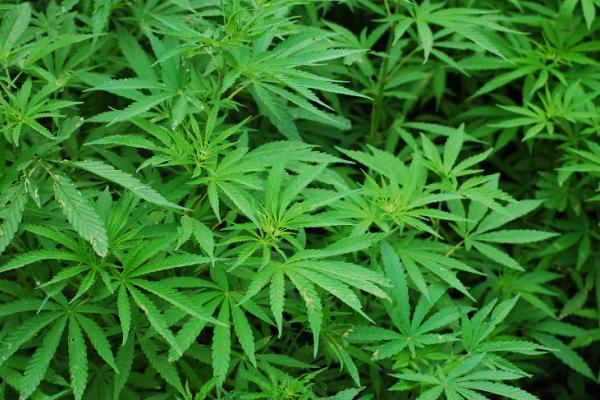Hemp has some of the strongest fibres found in nature and was used for thousands of years to make clothes, ropes and ship sails. Then, with the invention of cheap petrochemical fibres, and later strict drug laws, hemp production mostly disappeared, until researchers figured out they could use it to make sustainable biomaterials, and even build houses.‘Hemp is a multi-use crop,’ said Dr Stefano Amaducci from the Department of Sustainable Crop Production at the Università Cattolica del Sacro Cuore in Piacenza, Italy.The IssueBuilding our homes, offices and basically any urban structure has made construction one of the mostresource heavy sectors in Europe.It’s also very energy intensive, but a shift to biological raw materials and processing methods could save up to2.5 billion tons of CO2equivalents per year by 2030.To support the transition to a more resource-efficient and sustainable economy theEuropean Commission’s bioeconomy strategyaims to develop new bio-based technologies and processes.‘The seed is used in animal feed and other food applications, while the stem is transformed through mechanical extraction into fibres and shives (the woody core of the stem) that have many purposes.’For instance, if you combine hemp fibres and shives with adhesives you can create building materials that in turn could make furniture, roof tiles and even sustainable concrete.Dr Amaducci is the project coordinator of MultiHemp, an EU-funded project researching hemp as a renewable material, where one of the partners, CMF Technology, developed hemp biomaterials that can be used as walls and floors.‘They mix hemp fibre with a patented material to create a 100 % natural material. They then use that to make the fibreboards which can be used to build the walls of a house.’Another partner has developed a system where hemp fibres are blown into tight spaces between walls to act as insulation.Combine double hemp walls with a hemp roof and some hemp furniture, and you’ve got a biomaterial home that’s main raw material boasts a range of environmental benefits.‘Hemp is a low-input crop,’ said Dr Amaducci. ‘It has a very strong root system so it can handle drought and requires only a small amount of nitrogen.’This means that less water and fewer fertilisers are needed to grow the crop while farms can be set up in more arid areas. If more farms are established in areas with unused land, more carbon can then be captured from the atmosphere and put back into the malnourished soil.More hemp farms wouldn’t mean an increase of marijuana production. Industrial hemp generally contains about 0.3 % to 1.5 % of THC (Tetrahydrocannabinoids, the intoxicating ingredients) compared to those species grown for marijuana, which can range from 15 % to 25 % or higher. The flowers in hemp production are normally used for cosmetics and pharamceuticals.Despite these many applications, as well as its environmental and economic benefits, hemp production is still very much a niche market.According to the European International Hemp Association, there was just 250 square km of land dedicated to growing hemp in 2015, in all 28 EU countries. That’s a tenth the size of Luxembourg.HarvestAnd yet, from this, over 85 000 tonnes of hemp straw has been harvested and processed into 25 000 tonnes of fibre, 43 000 tonnes of shivs, which can be used as a biofuel, and 13 000 tonnes of dust, which can be used as biomass pellets and compost. There were also 11 500 tonnes of seeds harvested and 240 tonnes of flowers and leaves that can be used in pharmaceuticals, food supplements and cosmetics.“‘The stem is transformed through mechanical extraction into fibres and shives (the woody core of the stem) that have many purposes.’Dr Stefano Amaducci, Università Cattolica de Sacro Cuore, ItalyTo further consolidate the economic viability of the plant, MultiHemp is mapping out the best traits in different hemp varieties.‘For the first time we have evaluated the commercially available genotypes of all the interesting traits,’ said Dr Amaducci. ‘This is important from a market point of view because it looks at the best varieties for fibre quality, fibre yield and seed yield.’The project also has its own biorefinery where Dr Amaducci is working with his partners to improve processing techniques of hemp into fibre, oil, fine chemicals and biofuels.However, it’s not just hemp that can replace oil-based fibres, it’s also corncobs, oat, wheat bran and sawdust.The EU-funded EcoLASTANE project explored the production potential of an organic compound called furfural, which is derived from these materials as they decay.Oil-based polyester makes up 72 % of the fibres consumed in the industry, and the issue is the high levels of emissions and pollution associated with obtaining the raw materials for these fibres and then transporting, storing, handling and processing them.On the other hand furfural can be made by just heating and cooling biomass, which the EcoLASTANE project developed to transform this agricultural by-product into a new 100 % bio-based polyester textile fibre.‘The final fibres produced from petrochemical or biological origin are almost identical. Precisely for that reason our bio-based synthetic textile fibres can make all the same products,’ said Francisco José Caparrós, the coordinator of EcoLASTANE.By the end of the project in early 2016 EcoLASTANE had developed demo products to showcase the potential of furfural fibres including bio-based polyester textiles for Raidlight, an outdoor clothes retailer.According to Caparrós, this approach will also help reduce costs for manufactures by avoiding fluctuations in the price of crude oil.‘We aim to improve the safety, environmental protection and cost reduction in an existing value chain by introducing a product that we know would perform very well in it.’
This article was originally published in Horizon, the EU Research and Innovation magazine.
Listing Description
Documents
No documents available.
Video
Funding Opportunities that may match your offer
Project budget:
No maximum
Deadline:
2025-01-28
Project budget:
€ 275.000
Deadline:
2025-01-30
Project budget:
€100.000
Deadline:
2025-01-28
Project budget:
€700,000
Deadline:
2025-03-11







